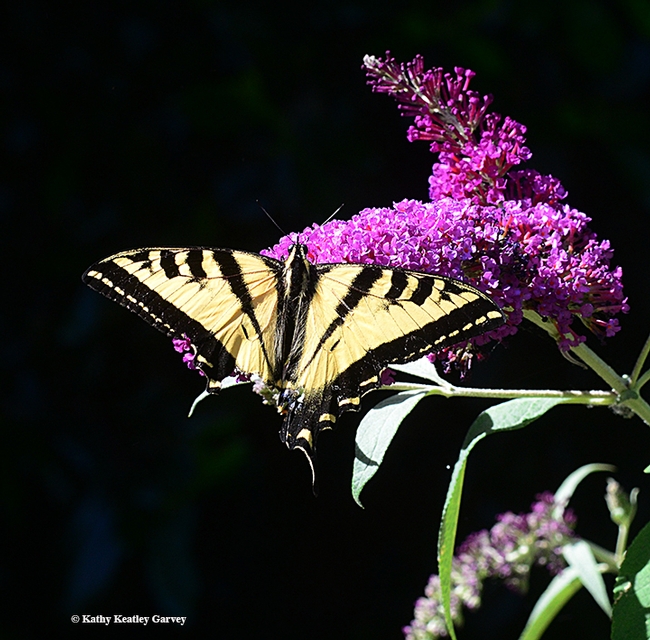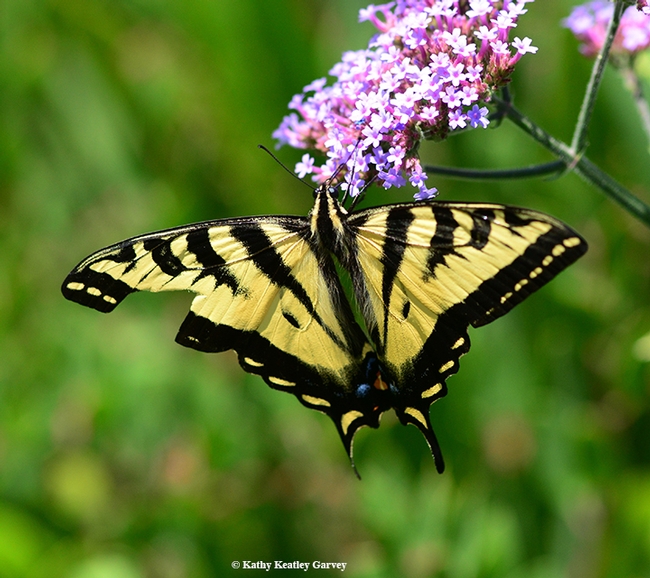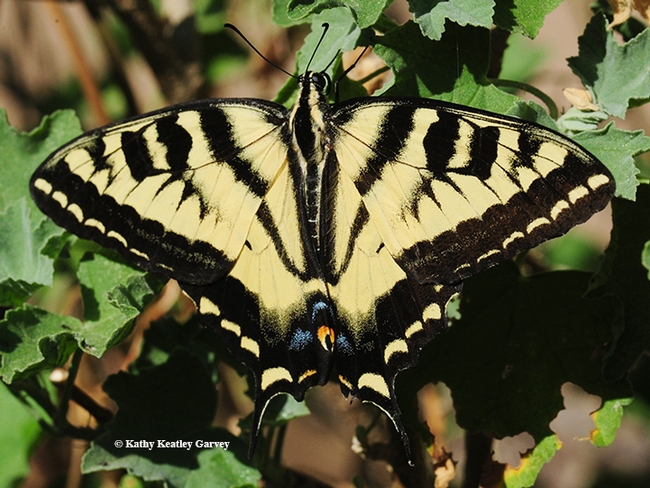- Author: Kathy Keatley Garvey
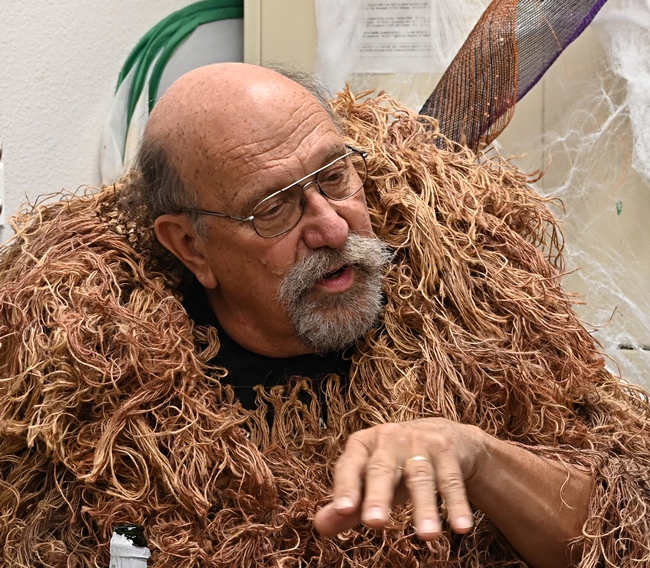
The predators and their prey were all in costumes, of course:
- The queen bee: UC Davis distinguished professor Lynn Kimsey, director of the Bohart Museum
- The praying mantis: Tabatha Yang, education and outreach coordinator of the Bohart Museum
- The green darner dragonfly: Christofer Brothers, a UC Davis doctoral candidate researching dragonflies
- The monarch: Barbara Heinsch, a Bohart Museum volunteer, who arrived with her entomologist-husband, Mike Pitcairn, retired senior environmental scientist, supervisor, California Department of Food and Agriculture (CDFA). He wore his CDFA lab coat and swung an insect net.
And the guy in the ghillie suit serving beverages (that would be forensic entomologist Robert "Bob" Kimsey of the UC Davis Department of Entomology and Nematology) is keenly interested in flies, but he didn't net the fly.
UC Davis entomology alumna Ivana Li, a biology lab manager at UC Davis, catered the event and arrived with her dog, Juniper, dressed as a taco. Lynn Kimsey cut a carrot cake, decorated with tiny carrots and large googly eyes.
Some attendees, including Joanna Chiu, professor and chair of the Department of Entomology and Nematology; UC Davis doctoral alumna Fran Keller, professor at Folsom Lake College; Bohart Museum associate Greg Karofelas; UC Davis doctoral alumnus Dick Meyer (who studied with the late Richard Bohart); and entomology student Kaitai Liu, arrived as themselves, sans Halloween costumes.
The Bohart Museum, located in Room 1124 of the Academic Surge Building, 455 Crocker Lane, houses a global collection of eight million insect specimens, plus a live insect petting zoo and a gift shop. Founded in 1946 by the late UC Davis professor Richard Bohart, it has been directed by Kimsey, his former doctoral student, since 1990. (See more Halloween images on the UC Davis Department of Entomology and Nematology website)
Next Open House on Monarchs. The Bohart's next open open house, set from 1 to 4 p.m., Saturday, Nov. 4, is on monarchs.
The event, free and family friendly, will be held in Room 1124 of the Academic Surge Building, Crocker Lane. This is an opportunity for attendees to ask questions about monarchs (Danaus plexippus) and native vs. non-native milkweed, among other topics.
The scientists will include:
- UC Davis distinguished professor emeritus Art Shapiroof the Department of Evolution and Ecology, who has studied butterfly populations in central California since 1972 and maintains a research website, Art's Butterfly World.
- UC Davis emeritus professor Hugh Dingle, a worldwide authority on animal migration, including monarchs. He is the author of Migration: The Biology of Life on the Move (Oxford University Press), a sequel to the first edition published in 1996. See news story on the UC Davis Entomology and Nematology website.
- UC Davis professor Louie Yang, who does research on monarchs. Due to parental duties, he may be able to attend only the last part of the open house. See news story about his work.
- UC Davis professor Elizabeth Crone of the Department of Evolution and Ecology, formerly of Tufts University, who researches monarchs. See news story about the declining monarch population on the UC Davis Entomology and Nematology website.
- UC Davis postdoctoral fellow Aramee Diethelm of the Elizabeth Crone lab. She holds a doctorate from the University of Nevada, Reno. Both her Ph.D. and postdoctoral work are on monarch butterflies. As a doctoral student, she investigated the phytochemical landscape of milkweed (Asclepias) species across northern Nevada and the effects of this variation on western monarch (Danaus plexippus) butterfly performance. See her research posted on Google Scholar, and her blog on "Drought Influences Monarch Host Plant Selection."
Shapiro points out that the monarch "is NOT a focal species in my research and I am NOT a monarch expert. On the other hand, I have a unique breeding-season census data set starting in 1999. The only other census data are for the overwintering roosts on the coast. It has become apparent that the two data sets do not always agree." Shapiro said he'd talk briefly about this at the open house.
The Bohart Museum, founded in 1946, houses a global collection of eight million insect specimens; a live insect petting zoo; and a gift shop. It is located in Room 1124 of the Academic Surge Building, 455 Crocker Lane. For more information, access the website or email bmuseum@ucdavis.edu.

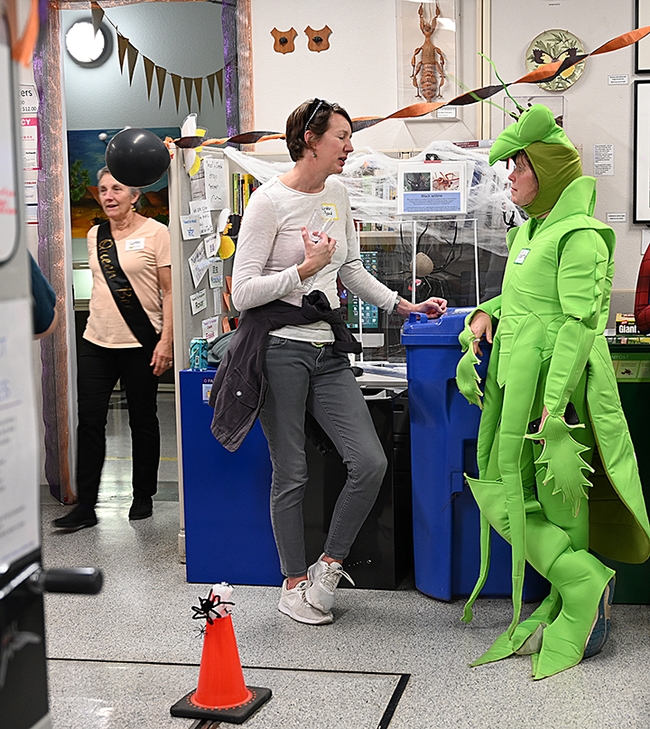
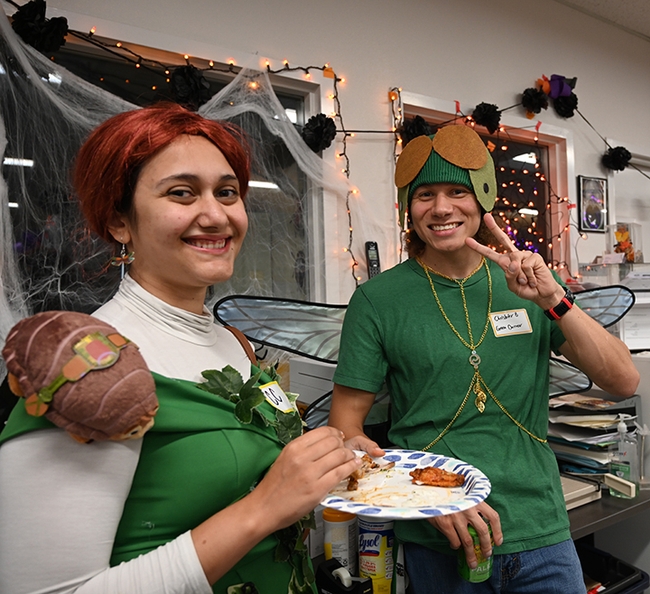
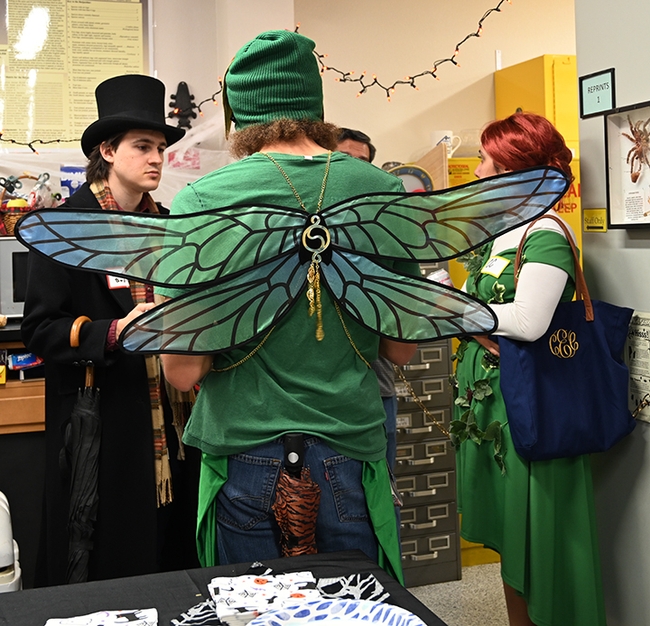
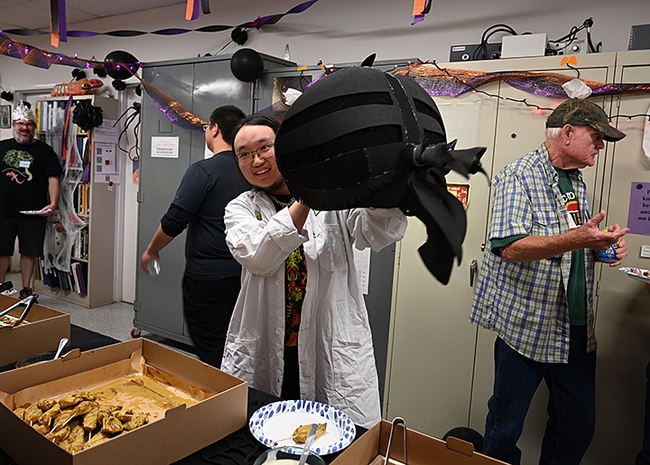
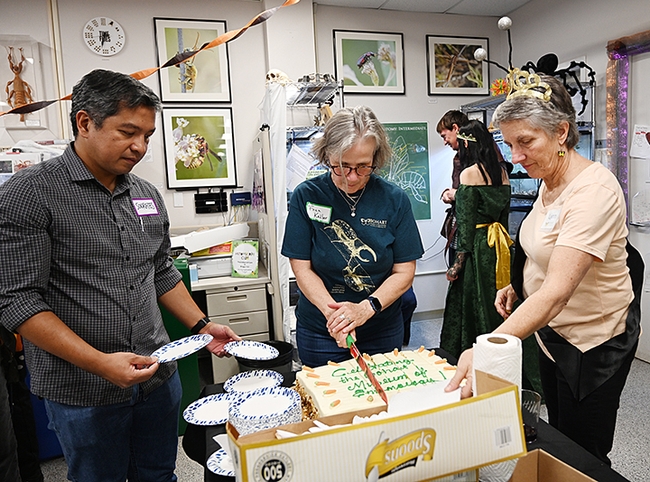
- Author: Kathy Keatley Garvey
If you have a passionflower vine (Passiflora), you probably have cats.
No, not the four-legged ones that meow, chase mice or cavort with catnip.
These 'cats or caterpillars are part of the life cycle of the Gulf Fritillary butterflies (Agraulis vanillae) and Passiflora is their host plant.
Watch for the chewed leaves, the frass (poo) and the chrysalids.
Expect a cat-tastrophe when predators like the California scrub jays, European paper wasps, and praying mantids appear and the 'cats disappear.
The circle of life...
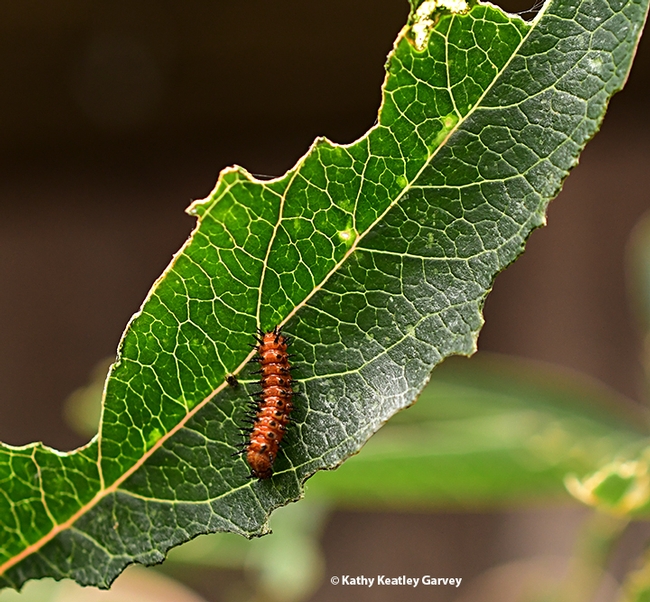
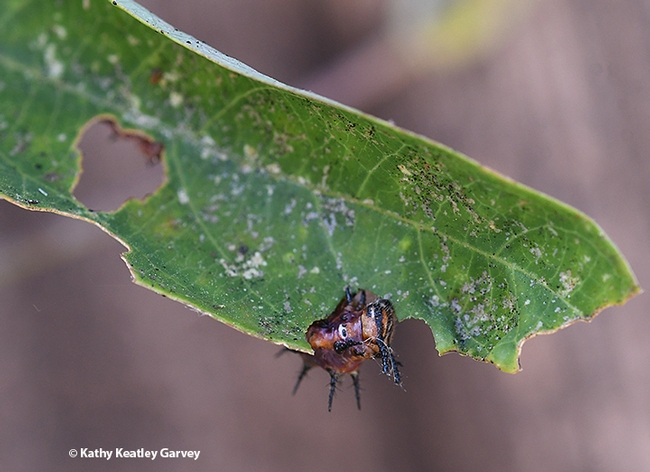
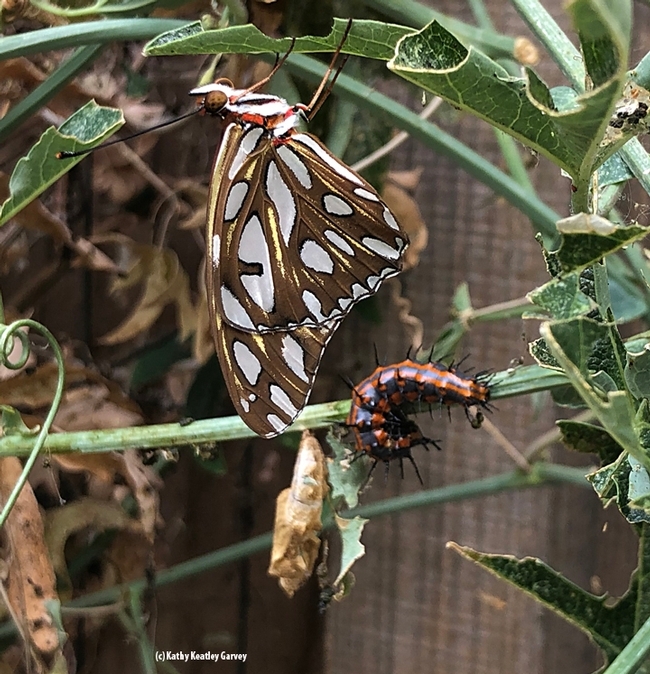
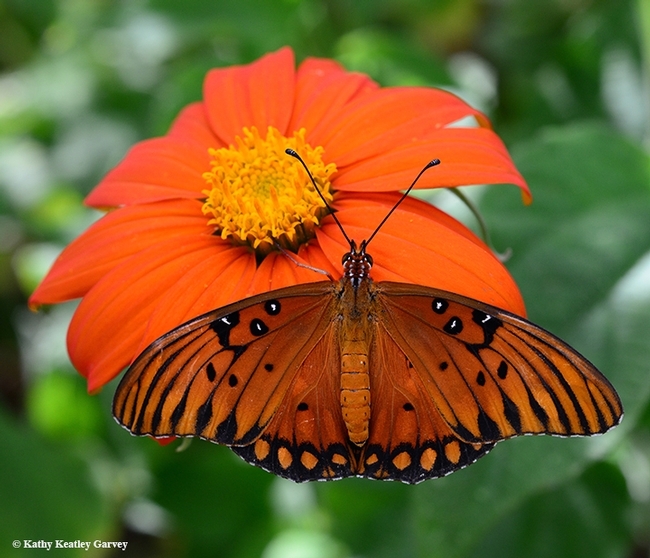
- Author: Kathy Keatley Garvey
It's early morning and the spider is hungry.
It snares a honey bee foraging for pollen and nectar in a patch of Mexican sunflowers (Tithonia rotundifola) in a Vacaville pollinator garden.
The spider slides down the sticky web, kills its prey with a venomous bite, and begins to eat.
The spider is not alone. It soon has unexpected dining partners: tiny freeloader flies (family Milichiidae) who did no work but insist on their share of the free food.
Indeed, orbweavers are artists. Wrote Emily Dickinson (1830-1886) in her poem, "The Spider as an Artist":
The spider as an artist
Has never been employed
Though his surpassing merit
Is freely certified.
Today was a good day for an unemployed artist, freely certified, too--and a good day for the freeloaders, certified hungry.
Emily Dickinson? She wrote many poems with references to such arthropods as bees, spiders, butterflies, flies and gnats,
Emily Dickinson's Arthropods
"By my count, 180 of Dickinson's 1,775 poems refer to one or more arthropods," wrote U.S. Army medical entomologist (retired) Louis C. Rutledge in The American Entomologist, summer of 2003.
Who knew?
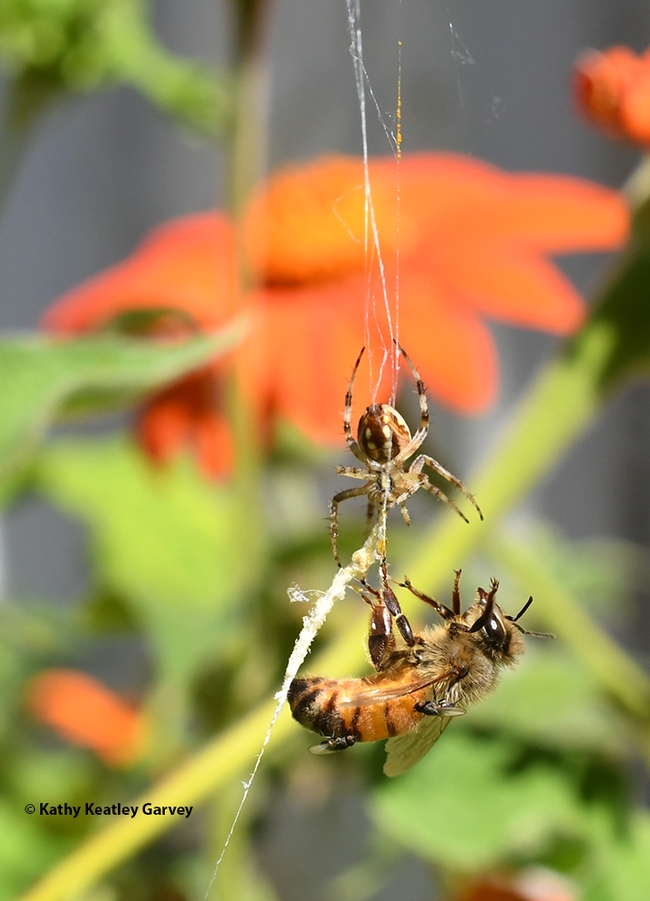
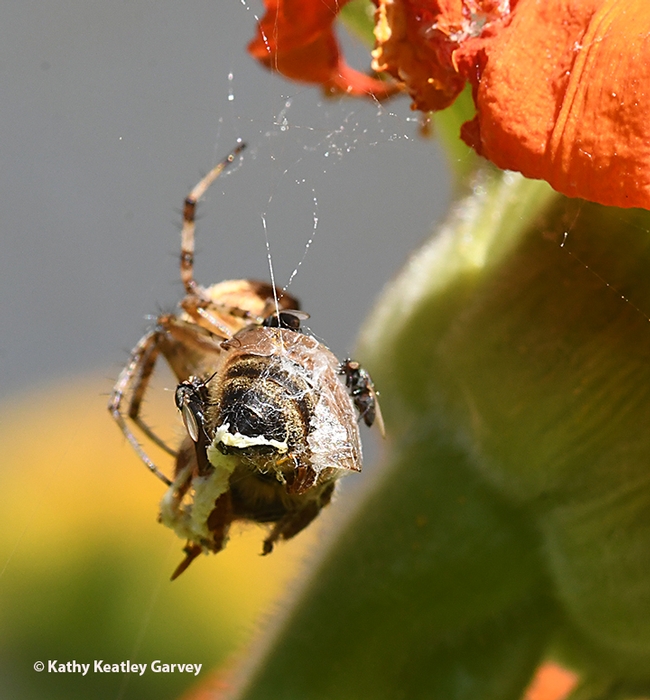
- Author: Kathy Keatley Garvey
A pollinator garden is a study in diversity--and of inclusion and exclusion.
The residents, the immigrants, the fly-bys, the crawlers, the wigglers, the jumpers. The big, bad and bugly. The prey and the predators. The vegetarians and carnivores.
The nectar-rich flowers attract honey bees, bumble bees and butterflies. And right near them are the predators: the praying mantids, dragonflies and assassin bugs.
The assassin bugs, family Reduviidae, are ambush predators. They resemble human assassins (or at least those on the movie screen!): long narrow neck, beady eyes, and sturdy body. When they ambush a predator, they stab it with their rostrum, inject venom, and suck out the juices. Or as UC Berkeley entomologists Jerry Powell and Charles Hogue write in their book, California Insects, "The victims, which include all kinds of insects, are snatched by quick movements of the forelegs, and immediately subdued by a powerful venom injected through the beak."
Such was the case with the assassin bug, Zelus renardii, this week. We watched one lie in wait on a Mexican sunflower (Tithonia); we watched another dine on an unidentifiable prey on a milkweed blossom; and we watched yet another stab a lady beetle (aka lady bug) on a leaf.
Everybody eats in the pollinator garden.
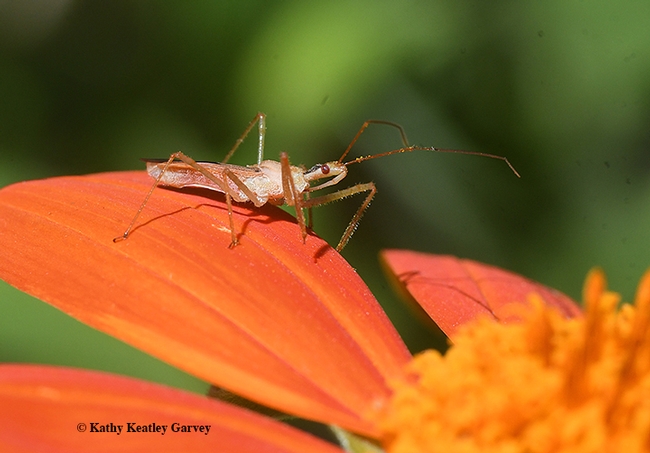
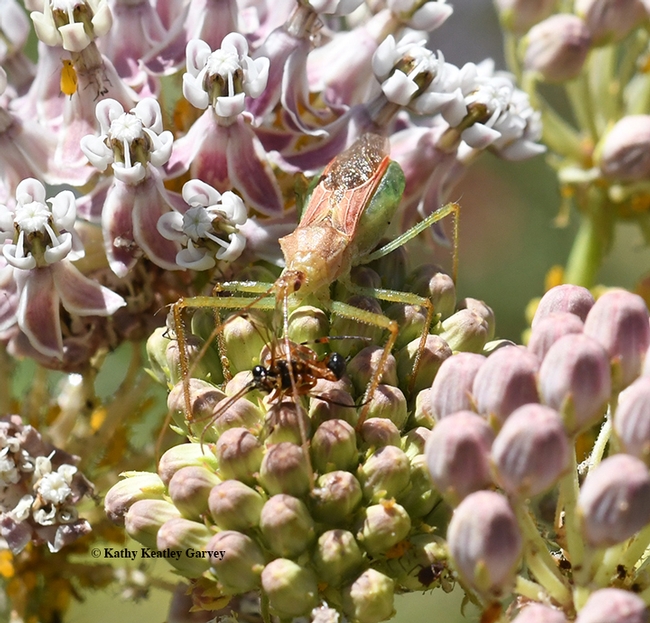
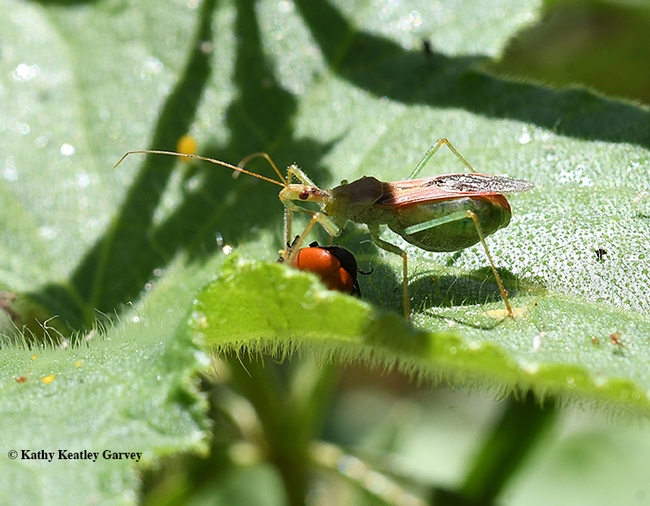
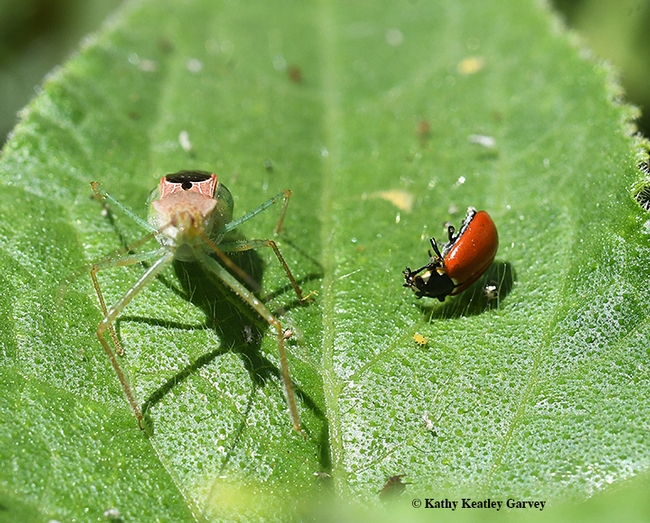
- Author: Kathy Keatley Garvey
It was "hit and miss."
The predators hit, and they missed.
Oh sure, they took a chunk out of these Western tiger swallowtails, but as they say, "a miss is as good as a mile."
The predators? Could have been a hungry bird, praying mantis, or a spider.
The Western tiger swallowtail, Papilio rutulus, a showpiece throughout western North America, populates urban parks and gardens. In color, it's a striking yellow and black, with spots of blue and orange near its tail. Its magnificent wingspan can measure 3 to 4 inches.
If you like to take images of butterflies, don't pass up the Western tiger swallowtail that's missing a chunk here and there. They don't have to be "picture perfect" to photograph--or to enjoy one of the wonders of nature.
